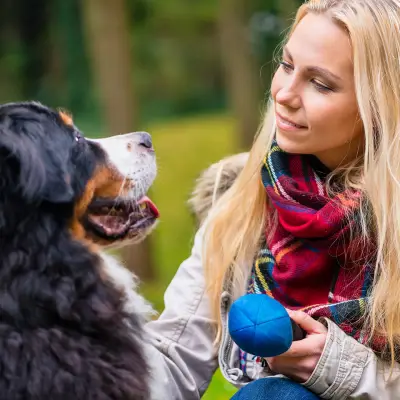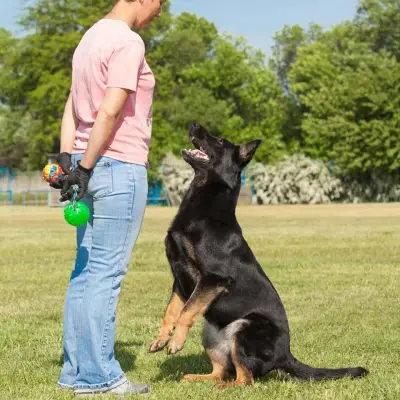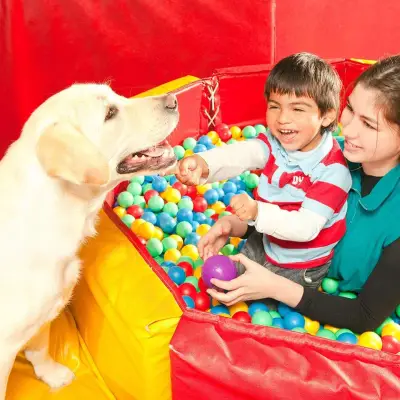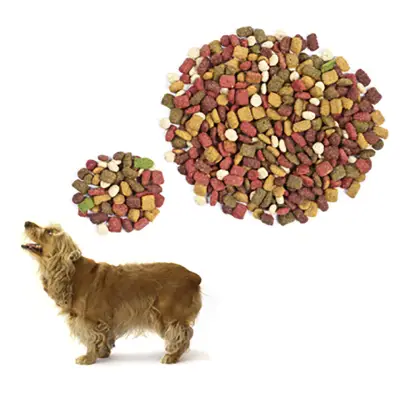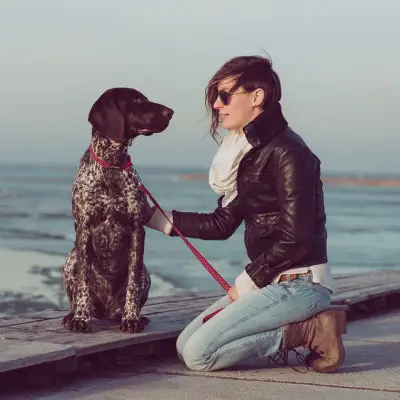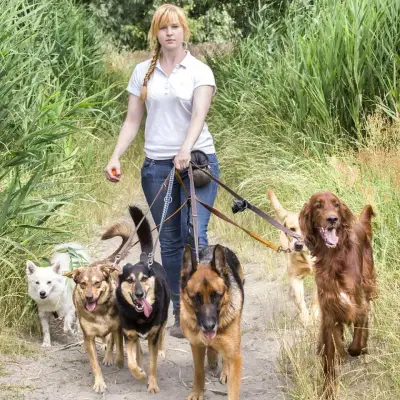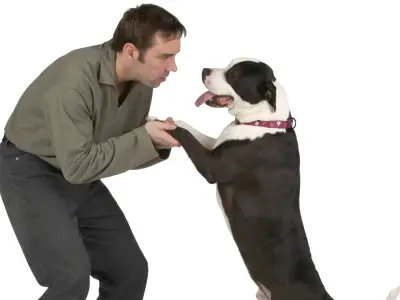Training your dog to 'leave it' might seem like a small goal, but it can transform your day-to-day life with them. You may be here because your dog won’t stop grabbing food off the floor, pulling toward other dogs on walks, or chewing on things they shouldn’t. Or perhaps you have a curious puppy and you want to set solid foundations early on.
The ‘leave it’ command tells your dog to ignore something and look to you instead. It’s about teaching them impulse control and helping them make the right choice, even when something exciting is in front of them.
Below is a simple, step-by-step approach to teaching your dog this valuable cue. These methods are effective whether you’re wanting to teach a puppy to leave it or need a refresher for an older dog. Let’s get started.
Jump to:
Recommended for you!
Best SellersHow to Train a Dog to 'Leave It' Step by Step
Step 1: Begin in a Quiet Indoor Space
Start with a calm environment where your dog can focus on you. You’ll need two types of treats: one lower value (like plain kibble) and one high value (like small bits of chicken or cheese). The idea is to offer the less exciting treat as the temptation and reward with the better one.
Sit down with your dog in front of you. Hold the low-value treat in your closed fist. Let your dog sniff, lick, or paw at your hand if they try. Don’t say anything. Wait until they stop trying and back away or lose interest. The moment they do, say “yes!” or click if you use a clicker, and then give them the high-value treat from your other hand.
Repeat this until your dog consistently moves away from your closed fist without needing to be told. This step lays the foundation for the leave it command; your dog is starting to learn that ignoring temptation leads to reward.
Step 2: Introduce the Verbal Cue
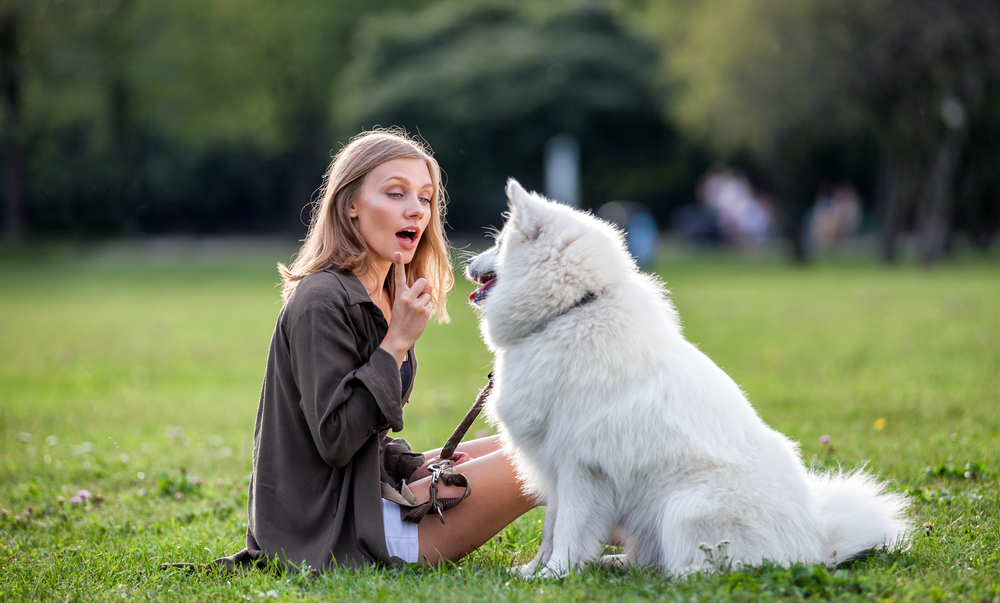
Now that your dog is backing off on their own, begin saying the phrase “leave it” just before presenting your closed fist. When they pull away, mark the moment with “yes!” and reward them as before.
At this stage, you’re pairing the action with the cue. This is essential when teaching a dog to leave it because you want them to associate the words with the behaviour. Practise this over several sessions until your dog backs off consistently upon hearing “leave it”, even before the hand appears.
Step 3: Practice with an Open Hand
Now that your dog understands the cue, increase the difficulty slightly. Place the treat in your open palm and hold it steady. If your dog goes for it, close your hand quickly. Wait for them to back away again, then say “yes” and reward them with the better treat from the other hand.
Continue to use the “leave it” cue when presenting your open hand. This stage helps your dog understand that just because something is accessible doesn’t mean they’re allowed to take it. You’re building impulse control and showing them that leaving something alone is more rewarding than taking it.
Step 4: Add the Hand Signal
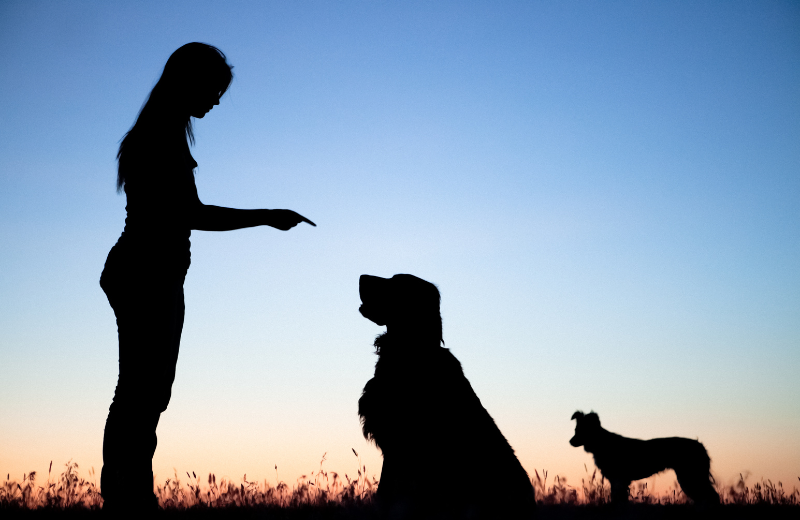
Hand signals are a powerful tool, especially when your dog is at a distance or finds it difficult to hear your voice. A common signal for “leave it” is to hold your hand out flat with your palm facing your dog, like a stop gesture.
To teach this, start by using the verbal cue and the hand signal together. Say “leave it” while holding up your hand in the stop position. Over time, your dog will begin to associate the gesture with the command and respond even without the words. This can be particularly useful in noisy environments, or if you want to communicate with your dog from afar.
Step 5: Add Movement and Realism
Once your dog is reliably responding to “leave it” with both the voice cue and hand signal, start practising with movement. Roll a treat or toy across the floor and use the command. The added motion increases the temptation and helps your dog learn to control their impulses in more real-life situations.
If your dog fails, that’s okay — go back to the previous step and try again. Each stage should only be progressed when your dog shows a strong response in the simpler version.
Step 6: Progress to Real-Life Situations
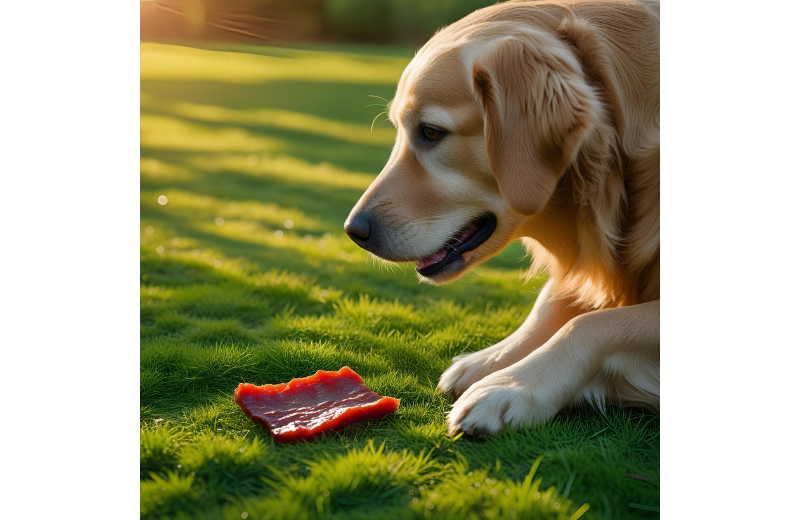
Now it’s time to take your training out into the real world. This stage is where your dog learns to apply what they’ve practised in everyday situations, during walks, in the park, or around distractions.
Start by dropping a treat on the ground and using “leave it”. Only reward your dog if they ignore the item completely. Next, try using the command when your dog sees something interesting, like another dog, a person, or a tempting smell. If they hesitate or look to you instead of lunging forward, mark it with a “yes” and reward them.
Gradually introduce more distractions, such as food on the pavement or birds in the distance. Increase your distance from the item and try the command when your dog is further away. Practise using just the hand signal as well, so your dog becomes comfortable with non-verbal cues.
This is where your training becomes part of daily life. It’s also where your dog learns to trust your direction and build self-control in exciting situations.
What’s the Difference Between Drop It and Leave It?
“Leave it” means don’t touch or interact with the item at all; it’s a prevention cue. “Drop it” is used when the dog already has the item in their mouth and you want them to release it.
Both commands are valuable, and ideally your dog will understand and respond to both. They serve different purposes, so they’re best taught separately and used clearly to avoid confusion.
What to Do When a Dog Won’t Leave It
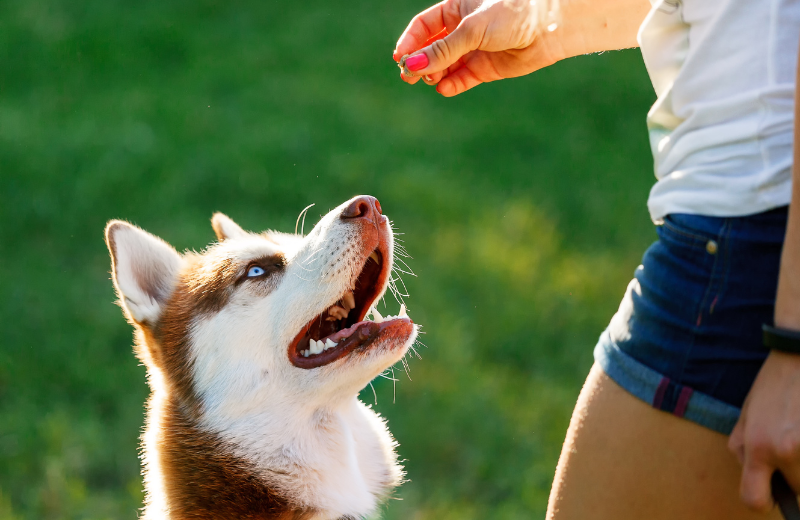
There are a few reasons a dog might struggle with this command, especially in more distracting environments.
Go back to basics. Practice in a quiet place. Make sure your rewards are exciting enough. Avoid repeating the cue; if your dog doesn’t respond, reset and try again. Stay calm and patient, and avoid punishment, which can damage trust and slow progress.
Consistency and clarity are more effective than frustration. If your dog ignores the cue regularly, it just means they need more practice at an easier level.
Common Mistakes to Avoid
- Using ‘leave it’ without teaching it first: It won’t mean anything to your dog until it’s paired with a clear reward system.
- Rewarding the wrong behaviour: Accidentally giving a treat when your dog is still staring at the item can be confusing.
- Giving up too soon: Consistency over time is more powerful than occasional sessions.
- Repeating the command: Say it once. If they don’t respond, remove the item or reset the exercise.
- Not proofing the command: Practising only in the living room won’t help your dog respond outdoors.
Recommended for you!
Best SellersFrequently Asked Questions
How long does it take to teach a dog to leave it?
The time it takes can vary depending on your dog’s age, temperament, and training history. Some dogs pick it up within a few sessions, while others may need a few weeks of regular practice. Stay consistent, be patient, and focus on rewarding the right behaviour.
Can I use ‘leave it’ for people or other dogs?
Once your dog understands the command, you can apply it to anything they’re fixating on, including people, other animals, and loud noises. It’s a flexible cue that helps redirect your dog’s attention back to you.
Is it too late to teach an older dog ‘leave it’?
Dogs of any age can learn new behaviours with the right approach. Older dogs may take a little longer to unlearn bad habits, but they’re more than capable of learning if you stay consistent and use positive reinforcement.
What if my dog gets frustrated during training?
If your dog seems stressed or loses interest, take a break. Training should always be a positive experience. Keep sessions short, end on a success, and try again later when your dog is calm and focused. Using high-value rewards can also help maintain motivation.
Can I use toys instead of treats?
If your dog is toy-motivated, you can absolutely use toys as a reward. Just be sure to still use a less interesting object as the item they must leave and reward them with something they find more exciting, whether that’s a squeaky toy, a tug rope, or playtime with you.
Should I use a clicker for training 'leave it'?
A clicker can be a great tool for marking the exact moment your dog performs the correct behaviour. If your dog already understands clicker training, feel free to use it during ‘leave it’ practice. If not, verbal markers like “yes” work just as well.
My dog listens at home but not outside — why?
That’s a sign your dog hasn’t yet generalised the command to new environments. It’s very common. Dogs need to practise commands in various settings with different distractions. Keep training in gradually more distracting areas, and continue rewarding them for success.
Can ‘leave it’ help with counter-surfing or bin-raiding?
Teaching your dog to leave tempting items alone on counters or in bins can help reduce these behaviours. However, it’s also important to manage the environment. Keep counters clear and bins out of reach while your dog is still learning.
Study Our Dog Training Diploma for £29
If you're ready to deepen your understanding and become a confident, knowledgeable trainer, consider taking the Dog Training Diploma Course with Centre of Excellence. Whether you're a dog owner, aspiring trainer, or simply passionate about canine behaviour, this course offers comprehensive guidance suitable for all levels. And right now, you can enrol for just £29.

